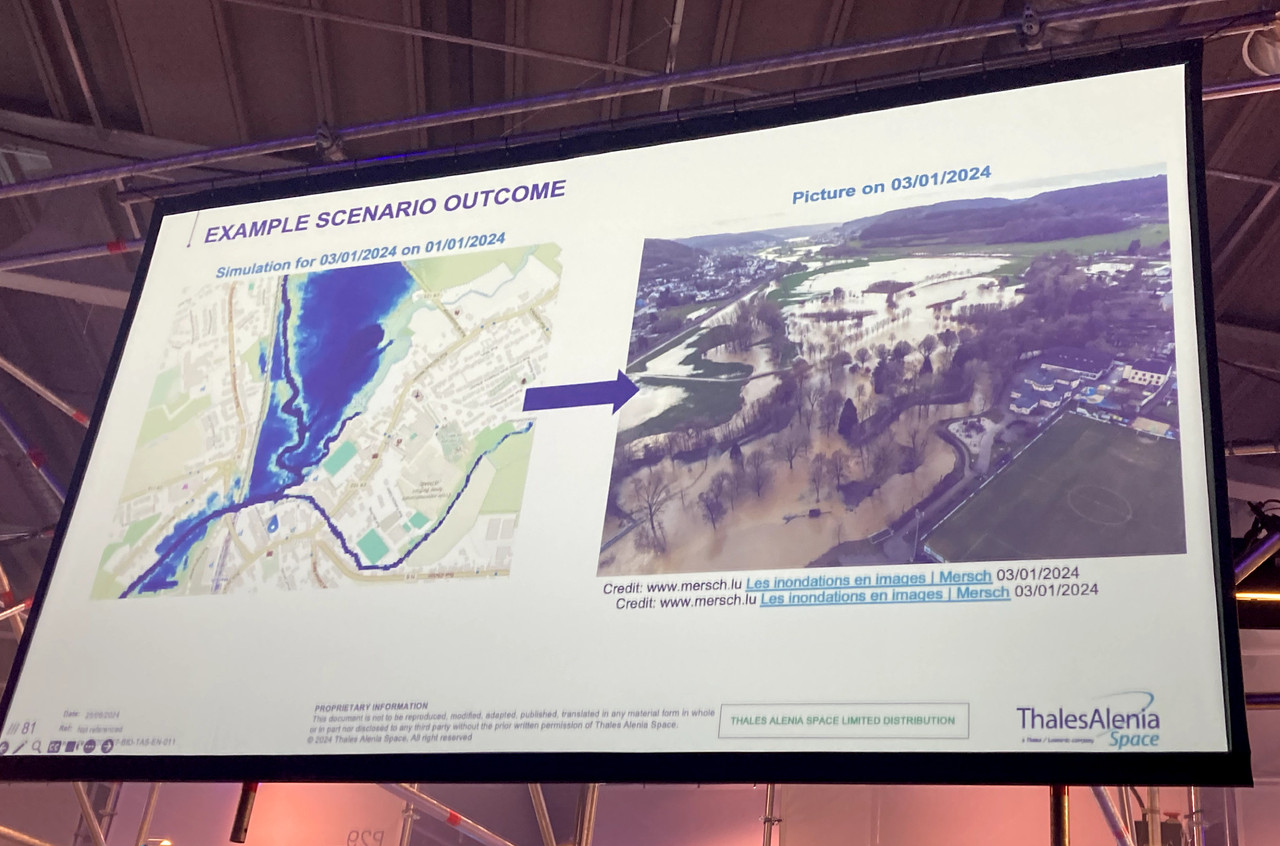Today, the Smart City mainly involves the development of digital twins. These digital twins can be fed with a wealth of information to manage and anticipate certain elements, such as traffic or water levels. This is possible thanks to the relay of connected objects and sensors, but also thanks to a whole range of different sources of information that can enrich the analyses (such as meteorological data in the case of water levels).
The importance of integrating a network
Erik Mannens, from imec UAntwerp ID Lab, explained that the digital twin approach has evolved in recent years: from an isolated digital twin to a digital twin with the integration of international partners and models. “To be more effective, a digital twin must be able to integrate into a network and not respond solely to local intelligence,” he said during his speech on the Nexus2050 stage. “But this requires a framework for such exchanges, including a secure data space so that the various partners and stakeholders in the project can deposit their data in complete confidence.”
The ultimate aim is to create local digital twins based on a European toolbox (Open Local Digital Twin). These OLDTs will represent the built environment and its environmental impact, with the primary aim of providing the tools and data needed to make decisions at both operational and strategic levels, based on tangible data. These decisions may concern a number of different areas, including transport, energy, the environment or town and country planning.
If we focus on the field of transport, and more specifically the management of automobile traffic, Qatar has developed a fine example. To meet the needs of the 2022 football World Cup, the Qatar Mobility Innovations Center has set up “a real-time car flow management system, linked to the parking offer, to enable football fans to attend as many matches as possible each day and thus avoid traffic jams,” said Hamid Menouar from QMIC. Using sensors and a platform incorporating artificial intelligence, traffic can be optimised, particularly at traffic lights, and motorists informed in real time of parking availability, enabling them to choose the best option without creating a traffic jam to park their car.
Working for climate change
A more local initiative was presented by Laurent Probst from PWC, who is currently working with ThalesAlenia and the Luxembourg Institute of Science and Technology (List) to develop a digital twin focusing on flood risk and resilience in the event of natural disasters.
To do this, they integrated data from satellites, “which was no mean feat, as the data is complex,” explained Probst. Using the Alzette as a case study, the system was able to simulate 36 different scenarios in a single day. “This enabled us to see the impact on schools, mobility and the emergency services. With this system, we can better envisage the consequences in real time,” said Probst. And during the test phase, the team was even confronted with several floods, which enabled them to verify the effectiveness of their tool in very concrete terms. “By being able to anticipate floods, we can not only increase vigilance in the field, but also measure the impact of such phenomena and, consequently, adapt political decision-making.”

During the test phase, a real flood occurred, confirming the reliability of the simulations. Photo: Paperjam.lu
“Our aim is to go one step further and create a Europe-wide framework for climate services. The idea is to pool efforts and investment in the basic tools so that everyone can then take ownership of them and adapt them to their own needs, because this has consequences for policy and regional planning, but also for the management of emergency services, finance and investment, insurance, agriculture, etc. Luxembourg is well positioned in this project and is one of the main contributors. Demand is high and we can create a common awareness and approach to the consequences of climate change and improve resilience at a regional level.”
Read also
For , Luxembourg City councillor in charge of the Smart City (DP), “priority in Luxembourg must be given to mobility and the environment. The city was at the forefront of these issues a few years ago. Now we need to take inspiration from the good examples around us to optimise all the data we have in our hands and take things to the next level.”
Data that could also evolve rapidly, “since satellite data could play a much bigger role in these processes,” confirmed Rika Nakazawa from NTT Data, who came to present the example of the city of Las Vegas, which has used their intelligent solutions to improve safety in the city’s parks, traffic jams and ghost drivers on one-way streets.
But the main obstacle to the development of these systems will undoubtedly remain human reluctance, which may have to be overcome by introducing new regulations.
This article was first published in French on . It has been translated and edited for Delano.
